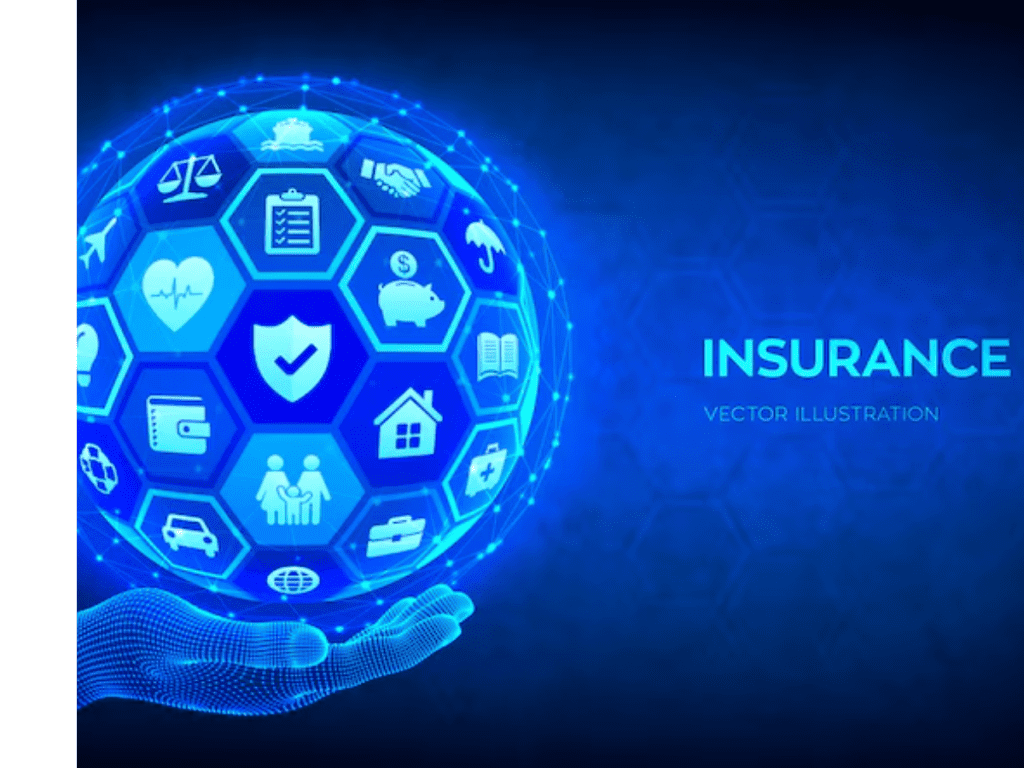Introduction
In the international financial environment, insurance has traditionally been viewed as a product for the affluent, one that serves mostly high-income individuals. Yet a new consciousness has begun to develop that insurance offerings, particularly those intended for risk management and protection from uncertainties of life, can and ought to be made available to everyone. This is where the idea of microinsurance emerges. Microinsurance aims to cover low-income communities, providing access to affordable coverage for a number of risks. By 2025, microinsurance will be a revolutionizing power for low-income households, particularly in developing economies where traditional insurance protection is unavailable or inaccessible. This piece discusses the increasing significance of microinsurance, how it benefits the poor, and its place within the larger theme of emerging markets and their economic growth.
What is Microinsurance?
Microinsurance refers to a type of insurance product that focuses on low-income individuals. It stands out from the conventional insurance model in a few significant aspects, mainly because of its affordability and accessibility. Microinsurance premiums are structured to be affordable so that even those who have limited incomes can afford its coverage. Furthermore, microinsurance products are normally crafted to specifically address the specific needs and risk exposure of poor people and communities, including medical concerns, natural calamities, farm losses, and loss of income due to unforeseen occurrences. The aim of microinsurance is not only to offer financial safety from risks but also to provide peace of mind. This is particularly vital for individuals who live hand to mouth and experience perpetual uncertainty about money. In a way, microinsurance mitigates the susceptibility to life’s uncertain challenges of low-income households to their financial shocks in a more sustainable manner.
Why Microinsurance Matters to Low-Income Families
Low-income households, especially in developing economies, are exposed to a wide range of challenges that leave them extremely susceptible to the effects of risks like sickness, accidents, natural calamities, and even death.
These risks can have dire economic and psychological impacts. Alas, most of these households are unable to pay the steep premiums of conventional insurance, so they have no protection against such occurrences. Lack of insurance is not only a monetary matter; it also brings about more social unrest because families can be driven further into poverty when a surprise incident interferes with their livelihood.
Access to Health Care
Health care is the key priority for low-income families across the globe.
Access to good-quality health care is not available in most developing economies, and the cost of getting cured can be unaffordable. Microinsurance for simple health expenditures, including visits to doctors, prescription drugs, hospital care, and surgeries, can be a vital safeguard for poor families. By featuring low-priced premiums, microhealth insurance keeps the cost of medical bills low, which is particularly significant in areas where out-of-pocket health spending can create catastrophic financial distress.
Protection against Natural Disasters
Emerging economies, especially in regions vulnerable to natural disasters like floods, droughts, hurricanes, and earthquakes, tend to be the hardest hit when disaster occurs.
Poor households in such regions are especially at risk because they usually reside in slums or locations that are more exposed to environmental risks.
Microinsurance provides an avenue through which families can avoid the economic impact of such events, as they are in a position to pay for their houses to be rebuilt, reclaim their lost properties, and become financially stable again.
Income Instability and Loss of Job
Most of the low-income households engage in informal employment, and job security is very poor with income volatility a permanent risk. This makes it hard for households to plan ahead or save in order to be able to handle unexpected occurrences.
Microinsurance products that insure income loss as a result of illness, injury, or death can assist in giving a financial safety net during times of uncertainty.
For instance, income protection policies provide a regular income in the event of illness, providing the insured household with financial security while recovering or restoring their livelihoods.
How Microinsurance Addresses These Challenges
Microinsurance has the potential to deal with numerous challenges that low-income households in developing markets are exposed to. Microinsurance products can reduce the risks that vulnerable groups are exposed to by providing low-cost health, natural disaster, and income protection coverage.
Affordable Health Coverage
Millions of people in most developing nations are uninsured because of the prohibitively expensive conventional health insurance.
Microhealth insurance, on the other hand, offers low-cost coverage that focuses on the most basic health requirements, such as access to general practitioners, inpatient care, and emergency services.
This type of insurance is very important following global health emergencies such as the COVID-19 pandemic, when the demand for low-cost healthcare has become even more pressing.
Microinsurance ensures that people do not have to forgo necessary medical treatment because they do not have money, thereby enhancing overall public health results.
Protection against Natural Disasters
Emerging markets tend to be in areas where they are highly susceptible to natural disasters. For instance, Southeast Asia is vulnerable to floods and earthquakes, while sub-Saharan Africa experiences frequent droughts.
Microinsurance products specifically designed to mitigate these targeted risks can assist people in safeguarding their property and recovering from the effects of a disaster.
Through payment for lost property or crops, microinsurance assists households in restoring their livelihoods and repairing their housing. With climate change on the rise, contributing to more frequent and severe natural disasters, microinsurance is becoming a rapidly more important instrument of disaster resilience.
Agricultural Insurance
Agriculture is still the main source of livelihood for most poor rural families. Yet, agricultural production is extremely vulnerable to natural factors, such as weather pattern changes, pest infestation, and crop disease.
Microinsurance for agriculture provides protection to farmers through compensation for crop loss, livestock death, or damage from extreme weather conditions.
This allows farmers to cover losses and maintain their farming activities, thereby ensuring food security and economic stability in rural areas.
The Role of Technology in Microinsurance
As we approach 2025, technology is increasingly being used to make microinsurance more accessible and efficient. The expansion of digital platforms and mobile technology is allowing microinsurance providers to access previously underserved groups in rural areas.
Mobile Technology
Even in some of the world’s most remote areas, mobile phones are ubiquitous, and mobile technology is revolutionizing how microinsurance is provided.
Using mobile platforms, insurers have the ability to sell policies, take premiums, and settle claims more effectively.
For many instances, microinsurance firms provide their services through SMS or mobile applications so that a person can reach insurance products as well as claim insurance directly using his/her own mobile phone.
This makes it more accessible to individuals who might not have access to physical insurance offices or agents.
Artificial Intelligence and Big Data
Artificial intelligence (AI) and big data analytics are also increasingly contributing to microinsurance. Through the analysis of large amounts of data, insurers can learn about the particular risks that low-income households face and develop tailored products that are more suited to their needs.
AI is also assisting in streamlining the underwriting process and making it more efficient and faster.
Additionally, AI-based chatbots and virtual assistants can assist customers, answer queries, and assist people through the insurance process. This assists in establishing trust among low-income customers who might be wary of buying insurance.
Blockchain Technology
Blockchain technology is highly promising, especially for the microinsurance industry, by enhancing transparency, curbing fraud, and accelerating claim settlement. Blockchain can make permanent, even tamper-proof, records of policies, payments, and claims, providing fair compensation and timely resolution to policyholders. This can increase customer trust where customers were not necessarily trusting in the conventional systems before. Blockchain lowers administrative expenses, which can assist in keeping premiums low and enabling microinsurance products at reasonable costs, too.
The Government and NGOs’ Role
Although microinsurance can change the lives of low-income families, its widespread implementation is made possible through the support of governments, NGOs, and other players. Governments can intervene by establishing conducive regulatory environments that facilitate the production and distribution of microinsurance products. This may involve offering subsidies or incentives to insurance firms to provide low-cost policies as well as ensuring that insurance firms conduct their activities in a transparent and equitable manner.
Non-governmental organizations (NGOs) also have a significant role to play in increasing the awareness of microinsurance and educating people on the worth of the same. NGOs are already active in working with poor communities and can assist in educating people on the advantages of insurance. Through collaboration with insurance companies, NGOs can also facilitate the distribution of policies to inaccessible places, enabling more people to gain access to financial security.
Challenges in Expanding Microinsurance
While it holds much promise, microinsurance faces some significant obstacles that need to be addressed to make it a common solution for low-income households. The greatest of these challenges is distribution cost. Expanding coverage to underserved communities in far-flung rural areas costs money, and insurance companies may not want to spend it on markets they view as unattractive or hard to reach.
Low financial literacy is another obstacle. Most low-income people might not comprehend the idea of insurance well enough to realize its benefits. Financial education campaigns are necessary so that people learn how microinsurance operates and how it can cover them against risk.
The Future of Microinsurance
Looking forward to 2025, microinsurance will be an integral part of the financial system of emerging markets.
With technology progressing and an increasing number of people coming online, microinsurance will become more pervasive, affordable, and within reach.
By providing affordable protection against a broad range of risks, microinsurance can help bring millions of people out of poverty, make them less vulnerable, and more resilient in low-income communities.
The future of microinsurance is promising not just for individual households but also for whole economies, as it helps to promote greater financial stability and economic inclusion.

